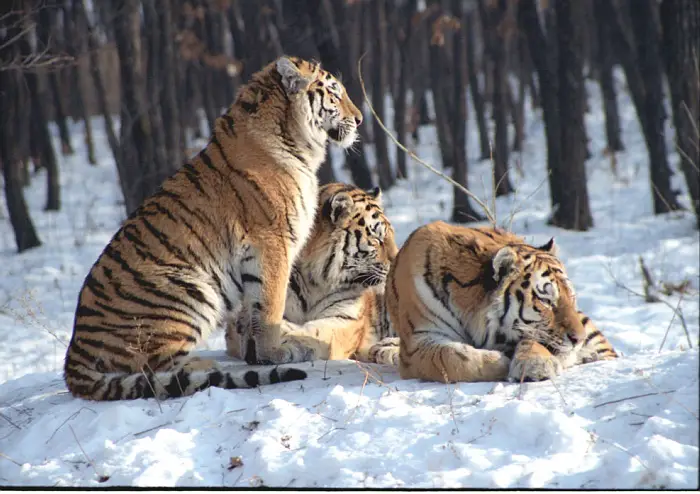The Siberian tiger (Panthera tigris altaica) is the largest of all cats. It lives in the Russian Far East. Unlike Bengal tigers, the Siberian tiger is adapted to living in extreme cold climates of Siberia. The historical range of a tiger was extended to Lake Baikal, Mongolia, north eastern China, and Korean Peninsula. However with the growth in human population the habitat range was limited only to the Russian Far East. It is also known as Amur tiger.
Siberian Tiger Habitat
Siberian tigers occupy a wide variety of habitats such as northern boreal habitats and coniferous-deciduous forests. The availability of food primarily defines the tiger’s habitat. The habitat is found at an elevation of about 500 to 800 m (1,600 to 2,600 ft) above sea level. Sometimes they live up to the height of 3,300 feet. They prefer Korean pine broadleaf forests because these habitats are abundant in ungulates which are the Siberian tiger’s main prey.
Read More: Do Tigers have Striped Skin?

In the spruce-fir forests fewer Siberian tigers make habitats because here red deer or wild boar is rarely found. Tigers fancy living in the conifer forests because the habitat offers Amur mouse and musk deer. Amur tigers are likely to live in the tree-dominated habitats and occur in fewer numbers in the open landscapes.
Habitat Loss
Read More: Siberian Tigers in Alaska
In the 20th century many tigers were killed, some died of food shortage while others were hunted to near extinction, still others lost their wild habitats because of industrial logging. The Korean pine forests were cut down on a massive scale in the late 1980s. Many spruce-fir forests were burnt down in the wildland fire in 1977—disappearing 21 – 28% of the forests.






Leave a Reply